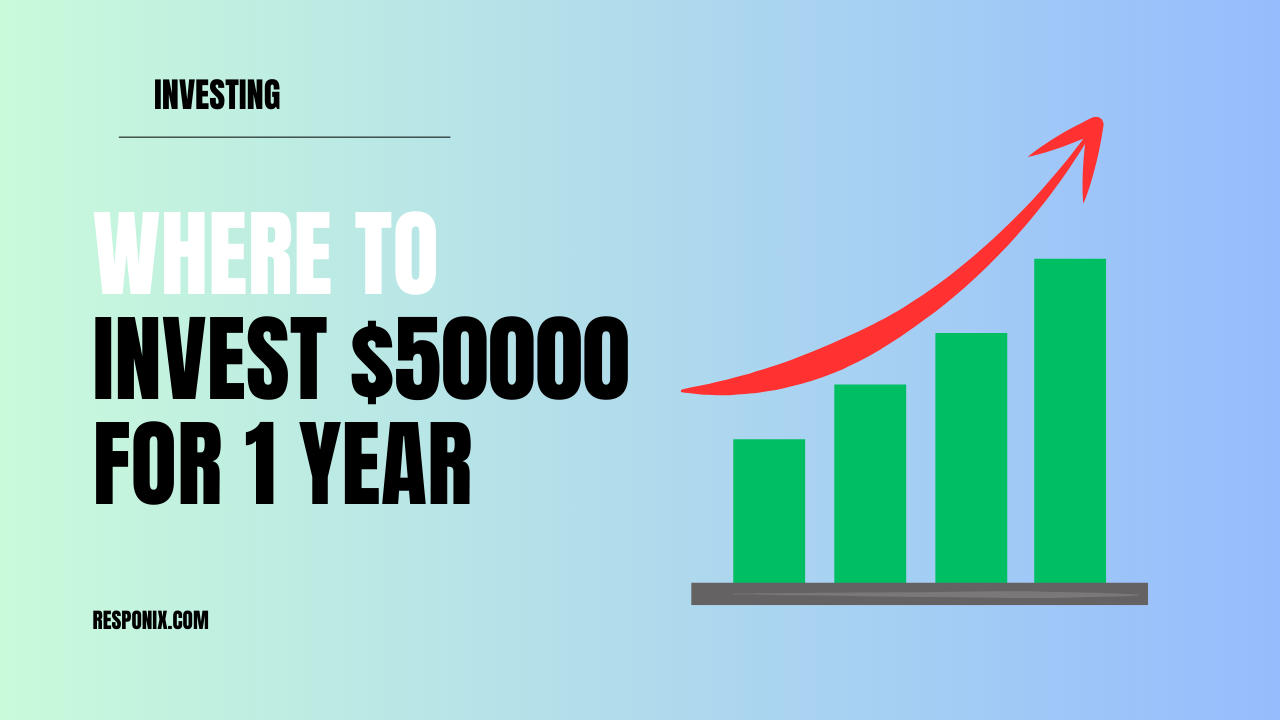Table of Contents
Understanding Short-Term Investment Goals
Investing $50,000 for a one-year period requires a focus on capital preservation and liquidity. Short-term investments aim to provide modest returns while ensuring that the principal amount remains secure. It’s essential to align investment choices with individual risk tolerance and financial goals.
High-Yield Savings Accounts
High-yield savings accounts offer interest rates higher than traditional savings accounts, making them an attractive option for short-term investors seeking liquidity and safety. These accounts are typically FDIC-insured up to $250,000, providing an added layer of security.
Benefits:
- Liquidity: Funds can be accessed anytime without penalties.
- Safety: FDIC insurance protects the principal amount.
- Interest Rates: Some banks offer rates up to 5% APY.
Considerations:
- Inflation Risk: Returns may not keep pace with inflation.
- Interest Rate Fluctuations: Rates can change based on market conditions.
Certificates of Deposit (CDs)
Certificates of Deposit are time-bound deposits offering fixed interest rates. They are suitable for investors who can lock in their funds for a specified period, typically ranging from 6 months to a year.
Benefits:
- Fixed Returns: Predictable interest income over the term.
- Safety: FDIC-insured up to applicable limits.
Considerations:
- Liquidity Constraints: Early withdrawals may incur penalties.
- Interest Rate Risk: Locking in rates may lead to opportunity costs if market rates rise.
Treasury Bills (T-Bills)
T-Bills are short-term government securities with maturities ranging from a few days to one year. They are sold at a discount and mature at face value, with the difference representing the investor’s earnings.
Benefits:
- Low Risk: Backed by the U.S. government.
- Liquidity: Active secondary market facilitates easy buying and selling.
Considerations:
- Lower Returns: Typically offer modest yields compared to other investments.
- Tax Implications: Interest income is subject to federal taxes but exempt from state and local taxes.
Money Market Funds
Money market funds invest in short-term, high-quality debt instruments. They aim to offer better returns than savings accounts while maintaining liquidity and capital preservation.
Benefits:
- Liquidity: Funds can be accessed quickly.
- Diversification: Investments spread across various instruments.
Considerations:
- Not FDIC-Insured: Unlike savings accounts, they don’t have federal insurance.
- Yield Variability: Returns can fluctuate based on market conditions.
Short-Term Bond Funds
Short-term bond funds invest in bonds with maturities typically less than two years. They offer higher yields than money market funds but come with slightly increased risk.
Benefits:
- Higher Yields: Potential for better returns compared to savings accounts.
- Diversification: Exposure to various issuers and sectors.
Considerations:
- Market Risk: Bond prices can fluctuate with interest rate changes.
- Credit Risk: Possibility of issuer default, though minimal in high-quality funds.
Peer-to-Peer (P2P) Lending
P2P lending platforms connect investors with borrowers, offering the potential for higher returns. Investors can choose loans based on risk profiles and expected returns.
Benefits:
- Higher Returns: Potential for returns between 5% to 7% annually.
- Diversification: Invest in multiple loans to spread risk.
Considerations:
- Credit Risk: Borrowers may default on loans.
- Liquidity: Investments are not easily liquidated before maturity.
Dividend-Paying Stocks
Investing in established companies that pay dividends can provide regular income and potential capital appreciation. While stocks are more volatile, selecting blue-chip companies can mitigate some risks.
Benefits:
- Income Generation: Regular dividend payouts.
- Growth Potential: Possibility of stock price appreciation.
Considerations:
- Market Volatility: Stock prices can fluctuate significantly.
- Dividend Cuts: Companies may reduce or eliminate dividends during downturns.
Digital Gold
Digital gold allows investors to buy and sell gold online without the need for physical storage. It’s a convenient way to invest in gold with small amounts.
Benefits:
- Accessibility: Invest with minimal amounts.
- Liquidity: Easily buy or sell through digital platforms.
Considerations:
- Price Volatility: Gold prices can fluctuate based on market dynamics.
- Platform Reliability: Ensure the platform is reputable and secure.
Conclusion
Investing $50,000 for a year requires balancing risk and return while ensuring liquidity. Options like high-yield savings accounts, CDs, T-Bills, and money market funds offer safety and modest returns. For those willing to accept higher risk, P2P lending and dividend-paying stocks can provide better yields. It’s crucial to assess individual financial goals and risk tolerance before making investment decisions.


